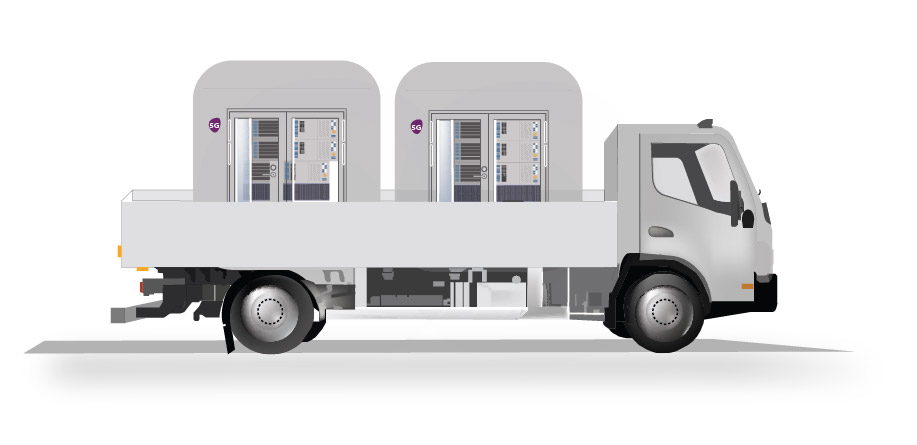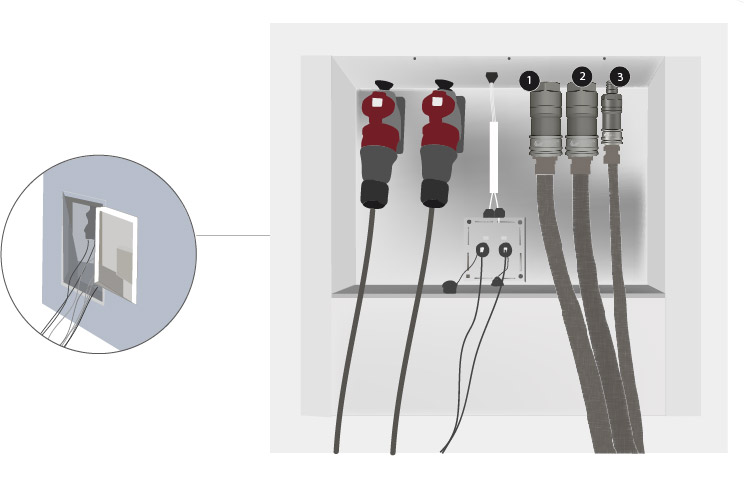5G modules with quick couplings reduce stress on power grids and optimize field operations

Technologies within data centers are continuously developing. With the entry of industry 4.0 (digitalization of industry) and 5G, there's a greater demand for machine learning and AI (artificial intelligence). CEJN is part of a research project looking into how 5G modules, designed for sustainable edge computing, reduce stress on power grids and optimize field operations.
RISE ICE data center, the leading data center research facility in Europe, is running a project focusing on sustainable and effective data centers, cloud, and analytic platforms. Within this project, a 5G module has been constructed to enable innovations and applications for AI and cybersecurity for the public sector. The 5G module is designed for sustainable edge computing. CEJN supplies this project with quick couplings to enable mobility for on-demand applications.
“The goal with the research is the incoming power to a data center, and to stabilize the power grid so that the average load on the grid can be increased, and also work off-line”, said Mattias Vesterlund, Senior Researcher Digital systems & Computer Science at RISE ICE data center, and continues.
“By doing so, the stress in the power grid will be reduced and more evenly loaded.”
5G module for the rising needs of AI
Throughout time, energy has developed through different phases and stages. We are now in a phase where machine learning and AI play and will play a bigger role with the entrance of 5G.
The industry has a rising need for AI and machine learning to control production. Using computing power, defective products can be detected, and future ones prevented.
At the ICE demo center, and together with several partners, a 5G edge module with a micro data center demonstrates how this era of technology needs this kind of onsite solution. And this is how it works:
1. The module is connected to a power and cooling microgrid, which enables operational optimization, i.e. for utilization of renewable energy sources such as locally produced photovoltage and free cooling. The primary source of cooling goes into the distribution unit, and then back out to the module.

2. The module is then easily brought on a hook lift truck and transported to the industry for installation where there’s a need for machine learning or computing power.

3. For fast and easy connection and disconnection of the module, electricity, data, and liquid cooling is connected through an outlet box on the module. For the liquid cooling connection, quick connect solutions are used to enable easy mobility without draining the system of cooling fluid.

(1) Liquid cooling fluid is going in through the first connection, and then (2) out through the connection next to it. On the third connection (3), condensed water is being removed.
Quick couplings enable a flexible solution
Quick couplings may be seen as a small part of the overall project, but yet a very important one. Without quick connectors, the 5G module wouldn’t be able to be as mobile and flexible as it needs to be in order to be effective.
“Quick couplings enable this module to be a flexible solution as it easily can be connected and disconnected”, says Mattias.
Using quick couplings also means that customer demands can be met to a greater extent also when the requirements are changing. In times when there is an increased need for computing power, the module can easily be replaced with a more powerful module.
CEJN ultraFLOW meets the requirements
The module at the demo center is using CEJN ultraFLOW quick couplings, a series of light-weight couplings with no-spill – which is essential when working with electronics. The no-spill feature will also allow working with pre-filled cooling modules, and thereby there’s no need for draining and re-filling the system with cooling fluid upon disconnection and connection.
“CEJN ultraFLOW meets all the requirements for this project in terms of quality and reliability”, Mattias concludes.
*Once the project is complete, RISE ICE hopes to inspire companies in selling this module to manufacturing industries. As RISE works for the public sector, they don’t pursue any own profitability, but support companies with knowledge and technologies.

Mattias Vesterlund
Mattias Vesterlund works as a senior researcher within digital systems and computer science at RISE ICE data center in Luleå, Sweden. He has a civil engineer degree and a Ph.D. in energy technology and is now also an adjunct lecturer in sustainable energy technology at Luleå University of Technology.
Related Stories

Shaping the future of liquid cooling technology in data centers: CEJN and the Open Compute Project (OCP)
The data center industry is undergoing huge technology shifts at a rapid pace. With advanced technologies demanding more power and efficiency, greater stress is put on thermal management systems. To meet the increasing cooling requirements, CEJN is actively contributing to the Open Compute Project (...

Universal Quick Disconnects (UQD) – open standard couplings now available in two sizes
CEJN now has two sizes of the UQD universal quick disconnects available. It is a reliable and easy-to-use quick coupling for liquid cooling in data centers developed upon an initiative by Intel as an...

PON Equipment builds world’s biggest battery-electric excavators – equipped with CEJN ultraFLOW
Pon Equipment, the Norwegian dealer of Caterpillar machines, is now bringing heavy-duty battery-electric excavators of 12 and 25-tons into the global market. At this level of power, an efficient...